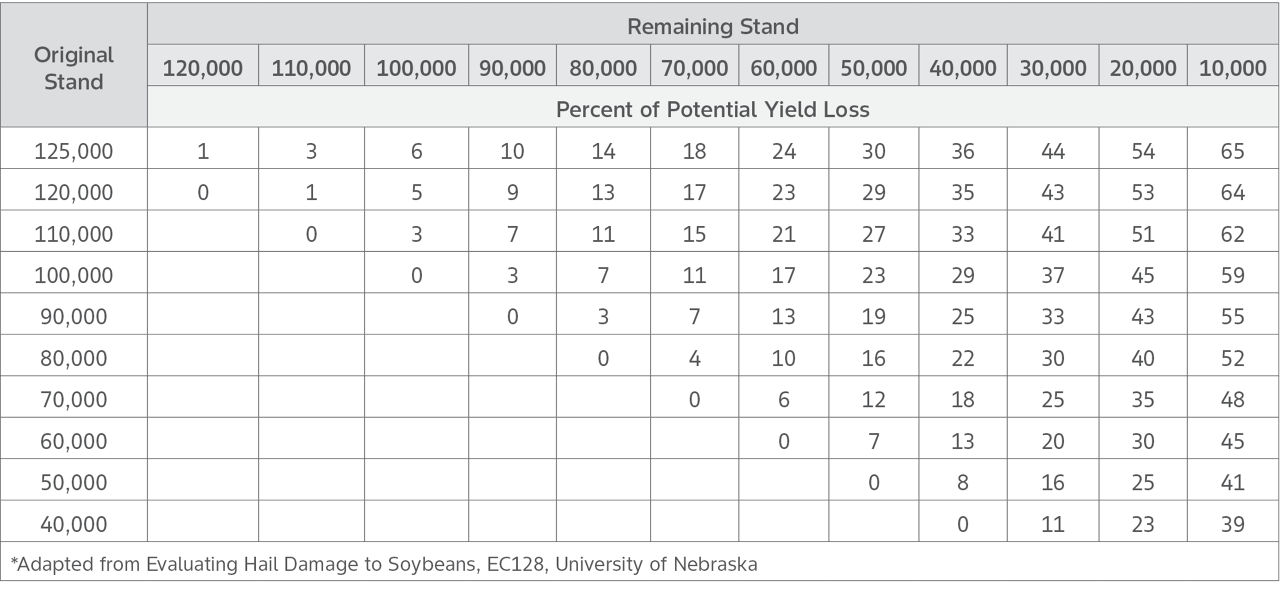Assessing Hail Damage in Early Vegetative Soybean
May 2, 2025
Unpredictable weather conditions can bring unexpected wind and hail at any given time throughout the growing season. Moreover, hail damage in the early vegetative stages of a soybean plant’s lifecycle can leave a producer wandering how this may impact yield potential. Hail can injure leaves, stems, and reduce overall population which leads to an assessment of damage to help determine if yield loss may occur (Figure 1).

After a hailstorm, please contact your local Channel® brand Field Sales Representative (FSR) or Technical Agronomist (TA) to make them aware of the situation. Your FSR or TA can schedule a time to look at the injured fields, but in the meantime collecting relevant information can help aide in the decision-making process. Information such as planting date, seeding rate, variety, herbicides or pesticides applied, and general fertility of the injured fields can aide in the assessment.
Typically, after hail has damaged plants, waiting three to five days before assessing damage results in a much clearer projection as this is the amount of time needed for regrowth.1 Once this time passes, an assessment can made to determine how many viable plants remain compared to the initial planting. In several locations within the field make an assessment by taking a stand count to estimate how many plants there where initially by counting all visible plants including damaged stems. Next, within that same stand, count the viable plants – those that are showing regrowth and do not have broken stems. Then use Table 1 to help determine the percent of potential yield loss based on the remaining viable plants. Replanting can be expensive because of additional seed, labor, equipment costs, any additional chemicals, and the yield potential of that replanting.
Table 1. Estimated Percent of Lost Yield Potential Based on Remaining Plants After a Hailstorm*

After an accurate assessment is made, follow-up decisions should be made regarding the next steps. One step may be a consideration to thicken up a stand in late May or early June if the stand is below 70,000 plants per acre. Additionally, early vegetative damage may cause late season soybean health concerns.
Please see Soybean Replant Decisions for additional soybean replant information.
Channel Agronomist
Mitchell Greve
Sources
1Anderson, E. (update from Staton, M.) 2022. Assessing hail damage to soybeans in the early vegetative stages. MSU Extension. Michigan State University. https://www.canr.msu.edu/news/assessing_hail_damage_to_soybeans_in_the_early_vegetative_stages
2Klein, R.N. and Shapiro, C.A. 2011. Evaluating hail damage to soybeans. EC128. University of Nebraska-Lincoln Extension. https://extensionpubs.unl.edu/publication/ec128/2011/pdf/view/ec128-2011.pdf
Web sources verified 3/28/25. 1110_544250